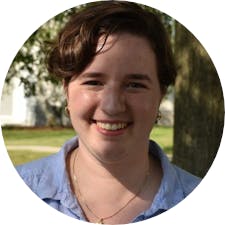Last night, 1,511 students opened their emails to find the name of their “optimal” match. They stared at their screens. They laughed, seeing their friends, or grimaced, recognizing an annoying classmate. They dismissed it or agonized over it, drafting and redrafting the same message over and over again. After all, how do you write an email introducing yourself to your future spouse?
The Marriage Pact launched at Middlebury seeking to find each student’s most compatible partner on campus. Entries closed on Monday with nearly 60% of the student population responding, and participating students waited in eager anticipation until they received their matches yesterday.
The pact
The Marriage Pact — a project originally launched out of a Stanford economics class in 2017 — consists of an algorithm that uses participants’ answers to a 50-question survey designed to find their optimal romantic — or platonic — match.
The Pact’s mission is to find participants’ most compatible long-term partner and marital “backup plan” in case they end up single later in life.
“Among all the people at a school like Middlebury what are the odds that the one person you happen to be friends with because you met them freshman year, or you happen to be in the same a cappella group is actually the best person [who you could make a marriage pact with]?” said Liam McGregor, one of the Marriage Pact creators. "But surely, there's someone at Middlebury who's probably good enough, right? They might not be your soulmate. But, out of all the people, that's probably someone who is good enough for you to marry.”
Since its founding, nearly 96,000 people have participated in the pact, forming 43,582 matches and one confirmed marriage. This year, the Stanford team began working with students at 33 colleges to launch the Marriage Pact on their campus, according to Mei-Lan Steimle, Stanford ’21, one of the Middlebury launch team project managers.
Kennedy Coleman ’21, one of the two students at Middlebury who helped bring Marriage Pact to the college, said the ultimate goal of the Marriage Pact at Middlebury is to “bring the community together at a time when we have to be ‘one Panther apart.’”
“I'm just excited to be doing something collectively again,” she said. “Having a big chunk of the campus be in on something just feels really good and needed right now.”
The matches
Participating students received an email with their match, their email, a list of shared values and how compatible they are compared to other pairs on campus. The top ten matches also received their ranking. From then, it was up to them to decide whether to reach out and chase after love.
However, 260 straight women were left without that option. Consistently across schools, the Marriage Pact is much more popular with straight women than straight, bisexual or pansexual men, leaving a “gap” of extra women with whom there is no one to match.
Middlebury Marriage Pact (MMP) launched an Instagram and email campaign calling for men who are attracted to women to “be a hero” and “fill the gap,” but was ultimately forced to cut off romantic pairing for straight women for anyone who filled out the survey after 11:26 p.m. on March 10.
https://twitter.com/taiteishomo/status/1370891374128734208
Any straight female participants after that date were paired off with each other in the most compatible platonic matches. Out of the 755 pairings, 625 were romantic and 130 platonic.
With an odd number of responses, one lonely student was left matchless.
The survey
The survey began with demographic questions like class year, gender identity, sexual orientation, political stance, race and religion before branching into questions designed to get at participants’ core values and life outlook. Questions ranged from asking participants if they “prefer politically incorrect humor” to whether they would run a red light if no one else was on the road.
Your values uniquely represent you,” said McGregor. “[The algorithm] will look at your values and how all of those interact, and [from there] it will look for your ideal partner.”
The Marriage Pact works with school partners to tailor the process to each school. While the majority of the questions remain the same across colleges, local students like Coleman help select a few key questions based on the culture of their campus. The Middlebury Marriage Pact, for example, asked students if they agreed or disagreed with the statement “I keep some ‘friends’ here at Midd because they might be useful to me in the future.”
The Marriage Pact normally contains a question that allows participants to indicate their racial preferences for their matches, which is designed to protect BIPOC participants from racist matches. However, the Middlebury Marriage Pact decided to remove this question for fear that it might inadvertently invalidate or make students of color feel unwelcome on Middlebury’s predominantly white campus, feedback that Steimle has heard from other schools.
“The Marriage Pact looks to find the best match possible for each person here on campus,” their online explainer reads. “How devastating would it be if a BIPOC student were matched with someone who was outright racist toward them? The most important thing the Marriage Pact questionnaire can do is discover discrimination like this privately, so that students won’t be exposed to it when they get their match.”
Liza Obel-Omia ’21 is excited to receive her match, but worries that, without this option, her match may be expecting a white partner and be disappointed to find out she’s Black or may fetishize her for her skin color, traits she says are easier to ferret out and avoid when meeting people in person.
The MMP does allow participants to exclude potential matches based on religion and political affiliation and asks heterosexual participants if they would feel comfortable having gay children. Similar to the original race question, the idea is to protect LGBTQ+ participants from matching with someone homophobic, according to Steimle.
The participants
Much of the school partners’ job is to create excitement surrounding the Marriage Pact and a fun user experience. In the week leading up to matches, Midd Twitter buzzed with Marriage Pact memes and jokes. On March 13, participants received emails with their “hot takes,” the answers they gave that were the most different from the rest of the school population. Tuesday evening, as participants anxiously waited for their matches to be revealed the next day, they received an email with their matches initials and a taunting message to “stay tuned for matches tomorrow night.”
https://twitter.com/miishapokladd/status/1370826401998372870?s=21
A self-described hopeless romantic, Obel-Omia is still hopeful that the Marriage Pact can help her find “the one.”
“I think it’d be a really cute story: to say, ‘Yeah, we both randomly did this thing, and we are meant to be together according to science,’” she said. “I think that's pretty romantic.”
Obel-Omia came to Middlebury expecting to meet her spouse here. Her father, a Middlebury alumnus, met her mother at a summer program at Bread Loaf School of English, and many of his old college buddies met their spouses at Middlebury as well.
Olin Robison, the Middlebury college president from 1975 to 1990, used to greet new classes at commencement by telling everyone: "Look to your left, look to your right: Two out of three of you will marry a Middlebury graduate." According to an article in The New York Times, he took credit for popularizing the myth that two-thirds of Middlebury graduates marry each other.
In reality, between 1915 and 1991, 17% of alumni married other Middlebury graduates, although love was in the air in 1929 when that figure jumped to 29%.
Calin Laine ’23 and Keith Chatinover ’22.5 have both resisted the romantic pull of the Middlebury marriage myth and were both more skeptical about the survey’s chance of success.
Laine doubts he’ll find his future spouse, but he is looking forward to the opportunity to make a new friend.
“Best case scenario, maybe I meet somebody new who's interesting and cool,” he said. “Given what's going on with Covid and stuff, it's cool to have the opportunity to get to know somebody who I potentially have never even heard of.”
After initially dismissing the Marriage Pact out of hand, Chatinover was drawn in by the Twitter buzz. He filled out the survey Thursday night with several of his close contacts as they laughed over the questions, drank beer and celebrated the upcoming weekend. For him, falling in love or even having a crush is about intimate personal connection, so he doubts he’ll find his soulmate from an algorithm.
But even the staunch cynics are not completely without hope.
“If I somehow meet the person I end up being with from this, I'm gonna have a lot of crow to eat,” he said.
Correction: An earlier version of this article mistakenly used the phrase "sexual preference" to refer to sexual orientation. An earlier version also misspelled the name of Olin Robison, the Middlebury College president from 1975 to 1990. These errors have been corrected.

Sophia McDermott-Hughes ’23.5 (they/them) is an editor at large.
They previously served as a news editor and senior news writer.
McDermott-Hughes is a joint Arabic and anthropology and Arabic major.
Over the summer, they worked as a general assignment reporter at Morocco World News, the main English-language paper in Morocco.
In the summer of 2021 they reported for statewide digital newspaper VTDigger, focusing on issues relating to migrant workers and immigration.
In 2018 and 2019, McDermott-Hughes worked as a reporter on the Since Parkland Project, a partnership with the Trace and the Miami Herald, which chronicled the lives of the more than 1,200 children killed by gun violence in the United States in the year since the Marjory Stoneman Douglas High School shooting in Florida.




